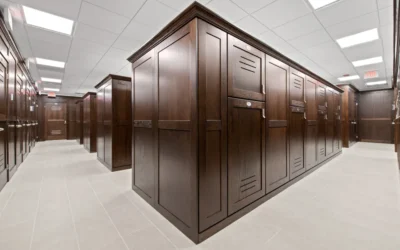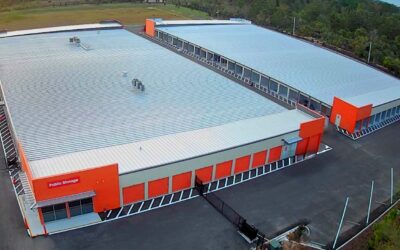Self-storage buyers hungry for yield have been chasing freshly developed “certificate of occupancy” deals where they can earn a higher return in exchange for taking on the lease-up risk—and none of the construction risk—of a newly built property.
Buyers of C/O deals, as they are commonly called, are finding they can cash in with a premium of between 125 and 175 basis points, compared to what they’d earn buying stabilized assets. For example, a stabilized property that would typically sell for a cap rate of 6 percent would sell for between 7.25 percent to 7.75 percent on a C/O deal.
Marketing C/O transactions means finding the right buyer – someone who sees the same vision as the developer and is willing to underwrite to the same lease-up assumptions, or even more aggressive than the developer, says James Ashley Compton, MBA, national director of the Self Storage Group at Colliers International.
“You are looking for a buyer who understands the market and the opportunity, and not just the stabilized cash flow,” Compton said.
Compton has closed on six C/O sales in the last 24 months and currently has another six C/O properties either listed or under contract.
There are more deals than ever
"JUST LISTED – INSTITUTIONAL QUALITY SELF-STORAGE C/O INVESTMENT OPPORTUNITY – CLARKSVILLE, TN" https://t.co/jGVp9jDiLD on @LinkedIn
— Ashley Compton (@ColliersStorage) July 6, 2017
There is a robust pipeline of C/O deals thanks to a very active construction cycle over the last few years with activity that is expected to hit a cyclical peak this year. Marcus & Millichap is predicting that construction will reach 48 million square feet in completions this year.
“There is as many, if not more deals that are quietly being shopped around than have been really at any point over the last few years,” said Luke Elliott, first vice president investments and direction, National Self Storage Group at The Mele Storage Group / Marcus & Millichap in Tampa.
“We are getting more and more inquiries from properties that are either to be built or are already built wondering what their exit strategies are for those,” Elliott said.
Some markets are overheated
However, buyers are keeping a careful eye on supply and demand dynamics in individual markets. In some metros, the new supply is creating higher vacancies and flat or discounted rents. On average, the U.S. inventory of storage has increased 12.1% over the past five years, according to Marcus & Millichap.
Those markets reporting the highest percentage in 5-year inventory change include:
- Raleigh at 37.8%
- Denver at 36.4%
- Austin at 34.9%
- New York City at 22.6%
- Dallas/Fort Worth at 22.2%
Concerns about oversupply are beginning to impact some C/O sales. It is more difficult to determine the actual rent data points due to rate discounting in some markets, notes Jared Jones, CCIM, managing broker/principal at Jones Investment Real Estate LLC in Tulsa, OK.
“It becomes difficult to price and underwrite deals, not to mention getting good data for appraisals. So, people really have to do their homework on the markets where they are developing or buying into to be able to understand where the real rates are,” Jones said.
For example, Jones has seen some markets where the rate difference can be between $30 and $60 per month for the same type of unit.
Buyers are more selective
While opportunities abound, buyers are being more selective and focusing on dynamics at the micro level.
“In self-storage it is so much of a what is in that 3-, 5- or 7-mile ring around the property. It is not so much individual market driven as what is in that immediate area,” said Elliott.
C/O deals are not always commanding the same premiums that they did a couple of years ago due to the fact that there are more C/O deals on the market and rental rates have come down a little in some metros. However, buyers are still aggressive in high-demand markets where there also are higher barriers to entry.
For example, Compton sold a C/O deal in a high-barrier to entry suburb in Nashville in February that traded for $215 per square foot as compared to about $150 per square foot for stabilized self-storage assets in that region. Pricing was aggressive because it is a submarket where it is “almost impossible” to get new storage approved, notes Compton.
On the buy side, C/O investment opportunities tend to require more assumptions related to rental rates and lease-up, allowing investors who are able to underwrite a much longer hold period to be more aggressive than the more “in the box” investors, adds Compton.
Builders might need to keep some skin in the game
There are still many buyers and more capital in the market looking for acquisitions than there are available for-sale properties. That demand has benefited the C/O market. At the same time, savvy buyers are being more cautious and doing their diligence in markets that have seen higher levels of new supply.
“The buyer pool is deep, but very selective. They are paying extremely close attention to supply within trade area, and projecting conservative lease up periods in certain markets,” said Jones. “Buyers in secondary markets won’t pay much above base replacement cost, thus margins are squeezed for the merchant developer type.”
Developers in oversupplied markets may not be able to completely exit the deal in the future notes Jones.
“In some ways, in order to get them sold, they are going to have to leave some of their equity into it and absorb some of the lease-up risk rather than dumping it all on the buyer,” said Jones. “some of these developers may not be able to get completely out and may need to leave some skin in the game to be able to transact with some of these new C/O deals.”







